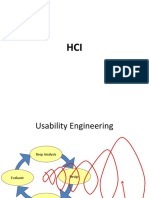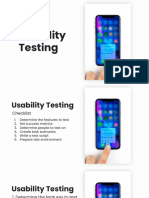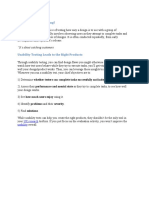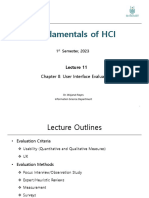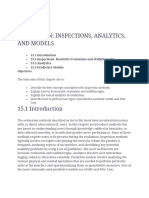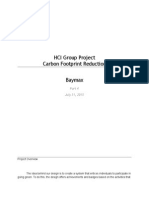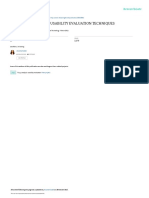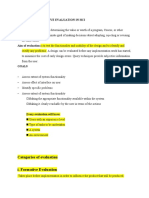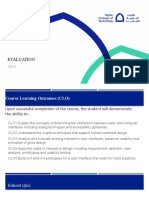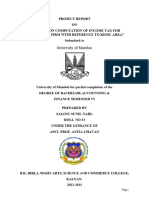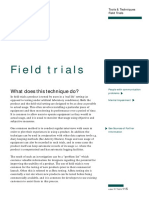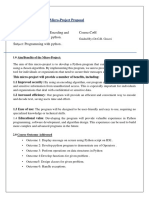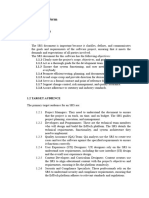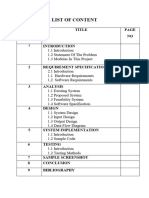0% found this document useful (0 votes)
25 views11 pagesUsability Testing Documentation
The document provides a comprehensive guide on conducting design usability testing, outlining essential steps such as defining goals, recruiting participants, and analyzing data. It emphasizes the importance of gathering user feedback to identify usability issues and improve design before public release. Additionally, it details various user testing methods, including prototype tests, first click tests, and navigation tests, to enhance user experience and design effectiveness.
Uploaded by
Olex OlexCopyright
© © All Rights Reserved
We take content rights seriously. If you suspect this is your content, claim it here.
Available Formats
Download as PDF, TXT or read online on Scribd
0% found this document useful (0 votes)
25 views11 pagesUsability Testing Documentation
The document provides a comprehensive guide on conducting design usability testing, outlining essential steps such as defining goals, recruiting participants, and analyzing data. It emphasizes the importance of gathering user feedback to identify usability issues and improve design before public release. Additionally, it details various user testing methods, including prototype tests, first click tests, and navigation tests, to enhance user experience and design effectiveness.
Uploaded by
Olex OlexCopyright
© © All Rights Reserved
We take content rights seriously. If you suspect this is your content, claim it here.
Available Formats
Download as PDF, TXT or read online on Scribd
/ 11




